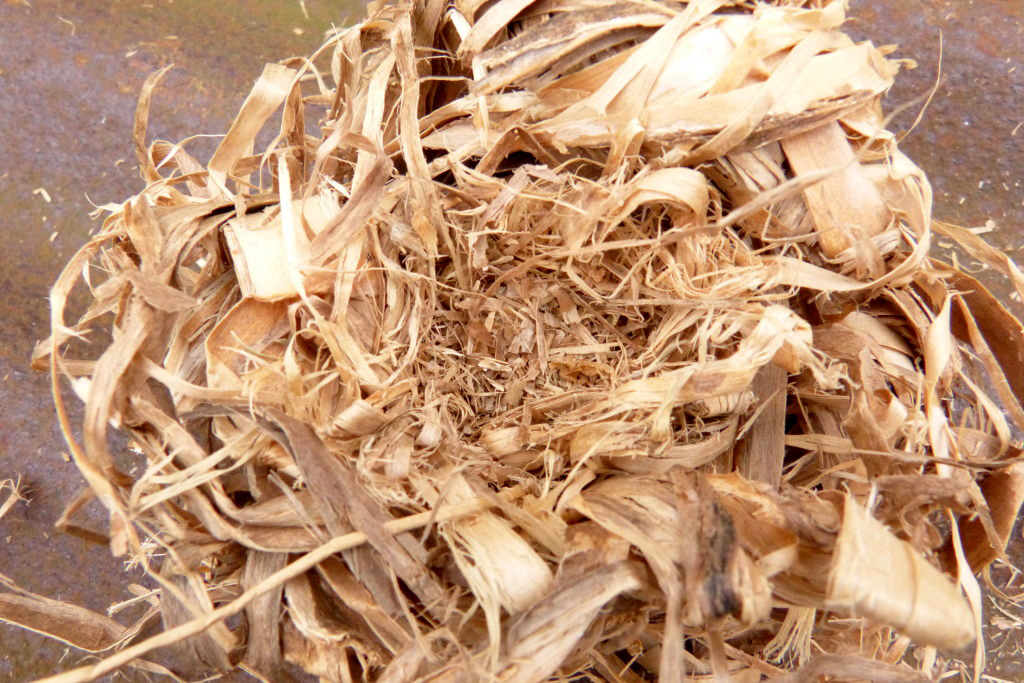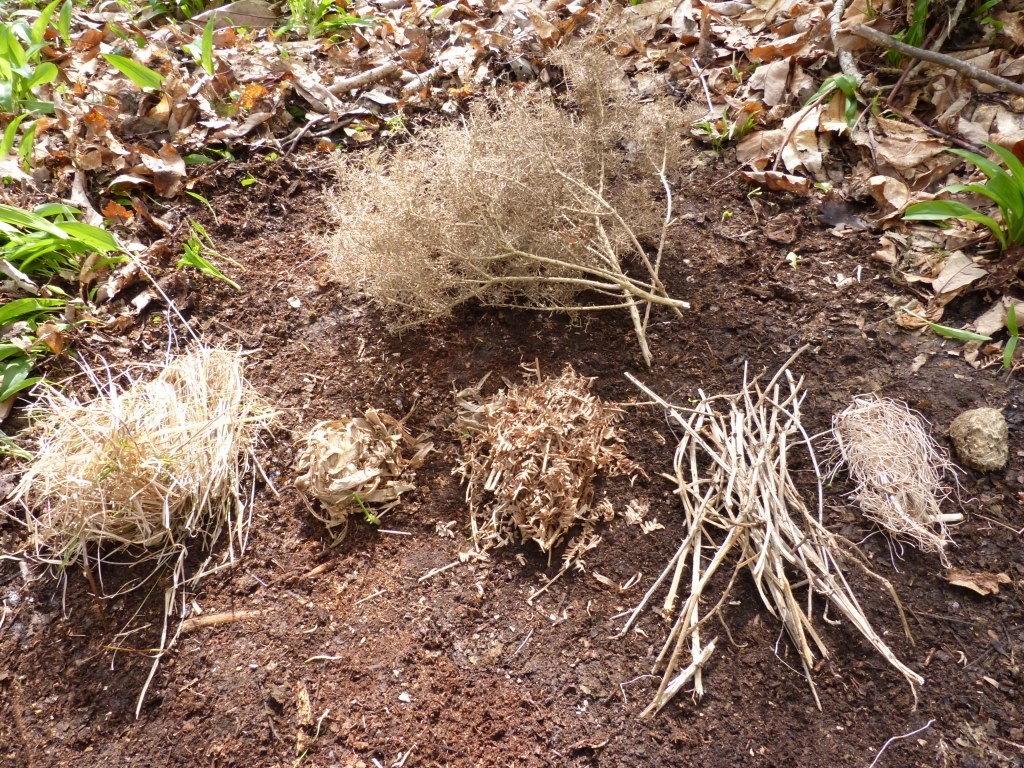By Sean Fagan

Sometimes finding natural tinder is not enough - it has to be processed. One such example is clematis bark (in photo) which has to be rubbed vigorously to be broken down into a finer consistency to make flammable (Photo: Sean Fagan - Southwest Ireland).
The Crucial Importance of Natural Tinders
.As I was greedily peeling away generous quantities of gloriously flammable bark from a paper birch tree, I was rudely interrupted - “No birch bark can be used from your tinder walk!” snapped the Bushcraft instructor. The other students and myself were attending a bushcraft course deep in the Boreal woods of North Maine, U.S.A.
The instructor asked us to collect as much natural tinder as we could find in the immediate area.
However, there were two conditions - we only had 30 minutes and “no birch bark!”. Birch trees were abundant in the area, and as many of you know, lighting a fire with birch bark is usually quite easy.
So we were forced to focus on other available tinder, that was not as flammable as birch bark, but would really improve our fire-lighting skills.
Tinder is by definition: any dry material that will ignite with a spark. It would be wise to expand that definition to include any dry man-made or natural material that will ignite with a spark, flame or ember, as these are the three main ways which most bushcrafters use to ignite their campfires.
The focus of this article is natural tinder...
...and a great way to improve your knowledge of natural tinder is to go for a tinder walk.
A tinder walk is a walk around a wild area where you collect as much natural tinder within a specific time frame (I find 15-20 minutes a good time) and then ignite them to see how well they perform as a combustible.
The objective of the exercise is to familiarise yourself with as many kinds of tinder that exist within a given area, and to also to familiarise yourself with the processing of different tinder (so as to make them as combustible as possible).
.
A while back, I did a 15 minute tinder walk in a broad-leaf woodland that adjoined a marshy area.
In total, I found 7 types of tinder - although a few of them were not thoroughly dry and would require some drying to ignite.
Still, I was quite surprised and pleased that in such a short time I found such a good number of tinder. I'm sure if I spent more time looking, I could have possibly doubled the number of tinder that was present in those woods and marsh.
The tinder I found was mostly easy to identify, relatively abundant, and easy to collect. Once alight, each of the various tinder burned differently - some burned strongly, while some burned rather weakly. Some tinder could take a spark and ignite, while another could only be ignited by flame. Overall, getting familiar with the capabilities and limitations of each tinder was very interesting - and educational.
.

Seven tinders collected on a 15 minute walk. Left to right – dead grass, clematis bark, dead bracken, dead bramble shoots (will take a flame), dead horsetail leaves, horse dung - top of photo: dead gorse. (Photo: Sean Fagan).
.
.
An interesting part of coming into contact with different tinder and trying to ignite them is that you become familiar with the processing of different kinds of tinder.
Some of the finer tinder (e.g. dead dry grass) can be ignited straight away with a flame or even spark, whereas coarse tinder (e.g. clematis bark) can be ignited with a flame, but it has to be buffed down into a finer, more ignitable tinder, when using sparks as your source of ignition.
Knowing what tinder are in an area and how to process them is a very desirable bushcraft skill - which will give you a lot of confidence.
The confidence to go into an area or habitat that you are familiar with and finding numerous types of tinder can be of great assurance to the bushcrafter, and is, without doubt, a potentially crucial factor in a survival scenario when fire is a priority (I highly recommend carrying man-made tinders as a back up means of igniting a fire - especially in wild, remote locations).
In addition, tinder walks can spark off (excuse the pun) your natural curiosity about tinder, so that when you come across a potential tinder that you are not familiar with, you can experiment with this newly found tinder to see if it will ignite your campfire.
In effect, you will develop a sense of what tinder will ignite, and just as importantly, how to process them into combustible tinder. This is a good thing.
.
Top Tip: 5 MINUTE FIRE
A great survival exercise is to collect tinder, kindling and fuel and try to get a strong fire going within 5 minutes. This exercise will really sharpen your fire-lighting skills and more importantly teach you how to ignite a fire within a short time-frame in case of emergency (e.g. hypothermia).
A word of caution - don't be reckless, be diligent when collecting your tinder, kindling and fuel. Any outdoor activity done in haste will increase the likelihood of an accident occurring. Focus, and take your time - you'll be surprised what can be done in as little as five minutes.
Another tip is to get in the habit of doing a reconnaissance tinder walk around the immediate area surrounding your campsite so you have, at the very least, a mental map of what natural tinders in the area.
It's often time well spent, especially when environmental factors are not so favourable (i.e. wet and cold).
.
.
Related articles on this website:- What the Bow Drill will teach you about Bushcraft (and Life)
- Fire Skills: Carrying Kindling
- Brief Homage to the Camp-Fire
.
*Check us out on Instagram, Twitter & Facebook for more outdoor-related topics.
Recent Comments